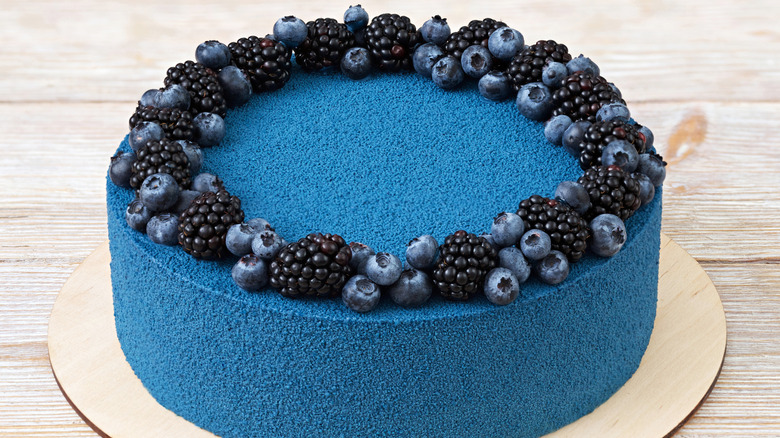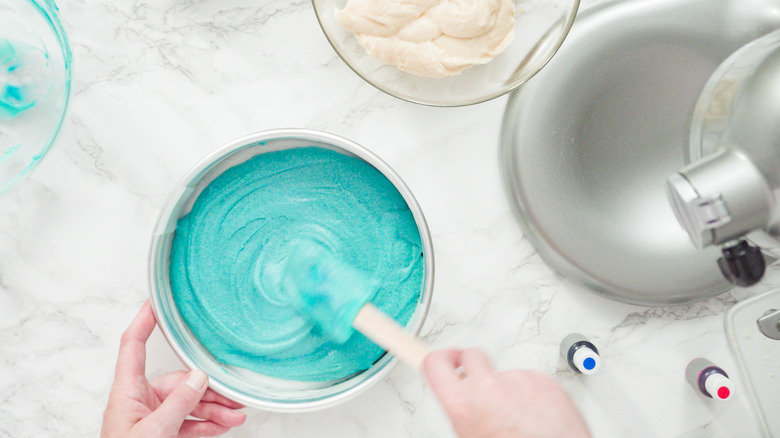The Reason Your Blue Velvet Cake Turned Green And How To Fix It
Blue velvet cake is like the cool, cobalt cousin of red velvet. With the exception of different food coloring, the recipe remains identical. As a result, that means that blue velvet cake teems with the same decedent flavors and luxurious textures as its ruby-tinted counterpart. Yet, much like red velvet, achieving the right color can prove daunting. Where red velvet risks turning brown, blue velvet is in jeopardy of turning green. The question is, why?
To put it simply, green batter produces green cake. Along with the unique combination of acidic ingredients that give velvet cakes their lusciously smooth crumb, the confections also consist of an equally unique blend of colorful ingredients. Essentially, since blue velvet cake is made with bright eye yolks and golden chunks of butter, this can produce a yellow-toned batter. When blue food coloring is added to this yellow base, the batter turns green.
Moreover, food coloring is known to darken. This means that as the cake bakes, its emerald tinge will become even more apparent. Thankfully, there are measures you can take in order to avoid green baked goods.
To keep cakes blue, prevention is the key
Unfortunately, once your confection is baked, there isn't a lot that you can do to fix it. Since color won't affect flavor, there's no shame in leaning into the "green velvet" effect. However, if you have your heart set on a blue cake, then the only way to sidestep a colorful surprise is to take preventative measures.
First things first, it's best to follow the recipe for blue velvet cake exactly. And since following these instructions produces a yellow-tinged batter, the best thing you can do after stirring in blue food coloring is to add a dash of purple. Acting as a color corrector, the violet dye will neutralize the brassiness of the golden batter. This in turn allows for the blue food coloring to be better absorbed, creating a bolder azure tone.
Likewise, to achieve an exceptionally rich navy hue, selecting the right type of food coloring is important. For example, liquid dyes and gels tend to produce subtle hues, which can lead to turquoise and teal-colored cakes. In contrast, highly pigmented pastes impart more vibrancy, making them a better choice when used for this type of dessert. With the help of these tips and tricks, consider the mystery of green-tinted blue velvet cake, solved.

